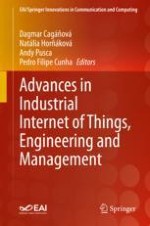This book presents the trends, challenges, and advances in Internet of Things (IoT) in the areas of industrial management and industrial engineering. The authors look at how smart environments (smart city, smart university, smart regions, smart transportation, etc.) affect the way industrial management and industrial engineering are envisioned, planned, and applied and how engineers must incorporate new ideas and methods now and in the future. Some topics include the impact of ICT on the emergency response vehicle driving time, car accident detecting systems based on machine learning algorithms, smart city platforms based on citizen reporting services, and IoT-based household energy consumption prediction using machine learning. The book brings together contributions from academics and practitioners from around the world to discuss the intersection of IoT, industry and management.
